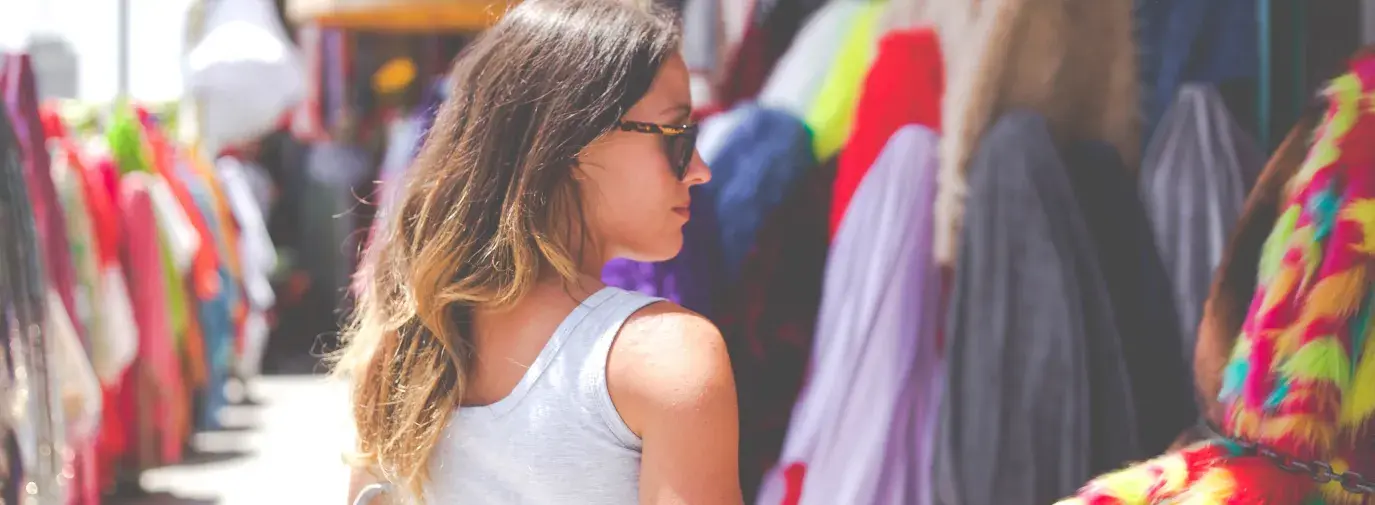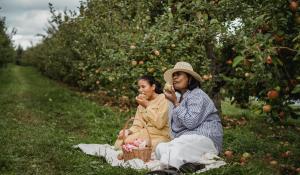
We all want to make the healthiest decisions for our homes, families, and the planet. What we eat, what we wear, and the items we use shouldn't bring us harm or cause negative health effects. Green America's vast green living resources can help you find better options, but here are fifteen things we just shouldn't buy anymore:
1.Styrofoam cups
Styrofoam is forever. It's not biodegradable.
Alternative: Buy recyclable and compostable paper cups.
Best option: Invest in some reusable mugs that you can take with you.
2. Farm-raised salmon
Several studies have found that PCB's and other environmental toxins are present at higher levels in farm raised salmon than wild salmon. Check out Green America's Safe Seafood Tip Sheet.
3.Beauty Products and Body Care with Phthalates and Parabens
Phthalates are a group of industrial chemicals linked to birth defects that are used in many cosmetic products, from nail polish to deodorant. Parabens are preservatives that have been linked to breast cancer. Be safe, choose products from companies that have signed on to the Compact for Safe Cosmetics.
4. Plastic Wrap
In the past, most household plastic wraps were made with #3 PVC (polyvinyl chloride), which may leach toxins when heated or microwaved. Due to health concerns, most brands have now removed PVCs from household plastic wraps. However, commercial plastic wraps, including those used at grocery stores, commonly contain PVCs.
5. High VOC Paints and Finishes
Volatile organic compounds (VOCs) can cause health problems from dizziness to lung and kidney damage. VOCs are found in products including paints as well as finishes used for wood, such a stains or varnishes. There are now a wide array of low or no-VOC paints and stains on the market.
6. Bleached Coffee Filters
Dioxins, chemicals formed during the chlorine bleaching process, contaminate groundwater and air and are linked to cancer in humans and animals.
Alternative: Look for unbleached paper filters.
Best option: Use reusable filters such as washable cloth filters.
7. Overpackaged foods and other products
Excess packaging wastes resources and costs you much more. Around thirty three percent of trash in the average American household comes from packaging.
Alternative: Buy products with minimal or reusable packaging.
Best option: Buy in bulk and use your own containers when shopping.
8. Teak and mahogany
Every year, 27 million acres of tropical rainforest (an area the size of Ohio) are destroyed. Rainforests cover 6% of Earth’s surface and are home to over half of the world’s wild plant, animal, and insect species.
Alternative: Look for Forest Stewardship Council certified wood.
Best option: Reuse wood, and buy furniture and other products made from used or salvaged wood.
9. Conventional household cleaners
Cleaners can contain hazardous ingredients such as organic solvents and petroleum-based chemicals that can release volatile organic compounds (VOCs) into your indoor environment, positing a particular danger for children.
Alternative: Look for nontoxic, vegetable-based, biodegradeable cleaners.
Best option: Try making your own green cleaner using vinegar, water, and castile soap.
10. Poultry products from industrial farms
Every year, 9 billion chickens are used for meat each year, and 305 million hens are used for their eggs. The vast majority of these chickens are raised in complete captivity and in overcrowded conditions. They are often fed drugs to make them grow to maturity faster, and those drugs may affect human health when consumed.
Alternative: Buy chicken meat and eggs that are certified organic and have trustworthy labels that concern animal welfare.
Best option: Support farmers who are using regenerative agricultural practices that regenerate the soil, capture carbon, and care for the animals. Check your local farmers market. Our Soil SuperHeroes campaign highlights some of these important farmers and food companies. Eat less meat and animal products made conventionally. Conventional animal farming is one of the world's biggest contributors to climate change.
11. School supplies made with PVC plastic
70% of PVC is used in construction, but it is also found in everyday plastics, including some children’s school supplies. Think backpacks, pencil cases, lunchboxes, and notebooks. Vinyl chloride, the chemical used to make PVC, is a known human carcinogen.
Alternative: Avoid plastics that are labeled as vinyl, “PVC” or “#3,” especially when kids will be using them.
Best option: Buy school supplies from certified green businesses where you know that products are safe and employees are treated well. Find them at GreenPages.org.
12. Plastic forks, spoons, and straws
Disposable plastic utensils are not biodegradable and not recyclable in most areas.
Alternative: Use compostable food service items made from plant materials such as corn starch and cellulose.
Best option: Carry your own utensils and food containers.
13. Paper towels
Paper towels waste forest resources, landfill space, and your money.
Alternative: When you do buy paper towels, look for non-bleached products, and if possible, also made from 100 percent recycled materials. Search the National Green Pages for recycled paper products.
Best option: Buy dishtowels or rags to wash and reuse.
14. Chemical pesticides and herbicides
American households use 80 million pounds of pesticides each year. The EPA found at least one pesticide in almost every water and fish sample from streams and in more than one-half of shallow wells sampled in agricultural and urban areas. These chemicals pose threats to animals and people, especially children.
Alternatives: Buy organic pest controllers such as diatomaceous earth.
Best Option: Plant native plants and practice integrated pest management. Plant flowers and herbs that act as natural pesticides.
15. Fast fashion
Some brands are really good at getting trendy looks in stores quickly and changing their merchandise often. Think Zara, H&M, Amazon Fashion, Uniqlo and Topshop, or sites like Romwe, Shein, and Amazon Fashion. Because of their business model based on speed and low prices, fast fashion brands all too often cut corners to save money. Fast fashion also relies on products not lasting long-- either falling apart due to poor construction or being tossed in the trash when trends pass.
Alternatives: Buy from green corporations, like Patagonia, Hanna Andersson, and Eileen Fisher which are easy to find and make clothes with green practices that are designed to last. Also, find certified green businesses in your area that sell clothes that use certified organic materials.
Best option: Buying clothes from thrift stores or secondhand online is a great way to minimize your carbon footprint and keep clothes out of the landfill.
Green America has a vision in which all communities are healthy and safe, and where the abundance of the Earth is preserved for generations to come. That may mean we reconsider our shopping choices or habits. Join the thousands of Green Americans who are doing just that! Check out our most popular green living tips.







